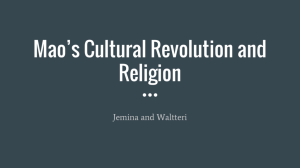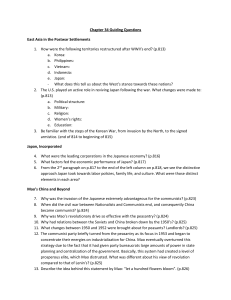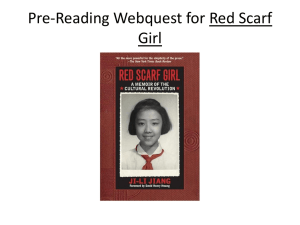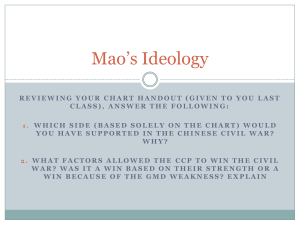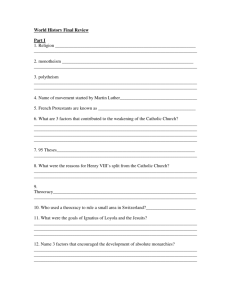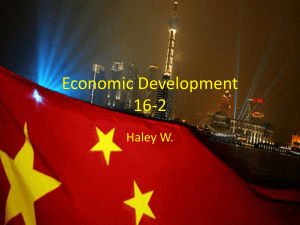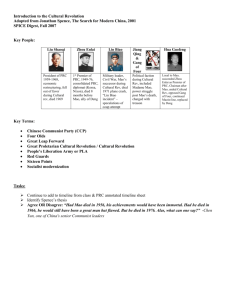Lesson PowerPoint
advertisement
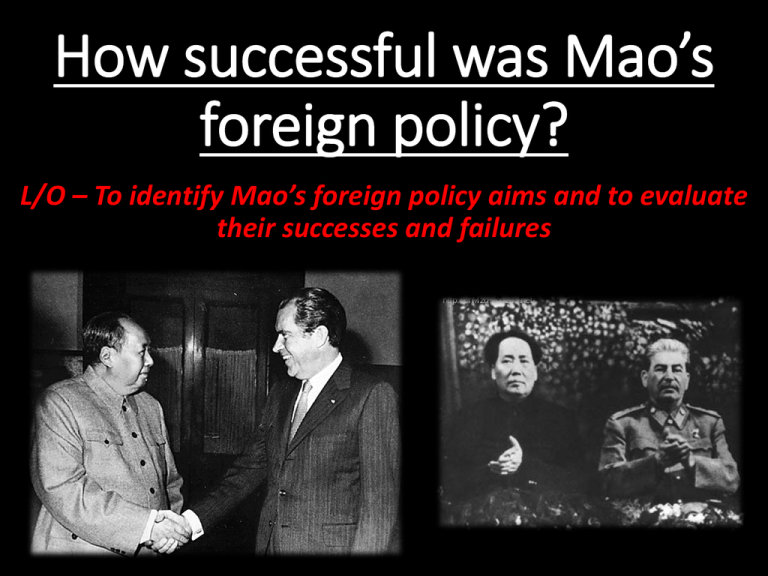
How successful was Mao’s foreign policy? L/O – To identify Mao’s foreign policy aims and to evaluate their successes and failures China’s Place in the World • Imperial China’s traditional self-image as centre of the Confucian world culture. A ‘universalistic civilisation’ that had no need for contact with ‘barbarian’ nations. • Self-image destroyed by Western imperialism in 19th century. National humiliation. Resurgence of nationalism after 1911 Revolution. KMT and CCP both wanted to restore China’s independence. • Achieved with victory of CCP in 1949 but raised new questions for Mao. What part should Communist China play in the world? Was it a member of the Communist world, the Third World or the international community? Should it spread revolution in the world or build ‘socialism in one country’? Should it rely on USSR? Mao’s Foreign Policy Priorities 1. Economic Development – China needed peace in order to promote socialist economic development and ensure national survival. 2. Territorial Integrity – China needed to secure its control over outlying provinces like Tibet and Taiwan. Feared hostile forces on its borders in Vietnam/Korea. 3. National Identity – Maoism was not just about world revolution but restoring the Chinese nation and re-dressing past humiliations. 4. International Revolution – As a committed Marxist, Mao believed that war with Capitalism was inevitable. Communist revolutions should be encouraged world-wide. Common Programme of PPCC – 1949 • Article 1 – ‘The PRC… opposes imperialism, feudalism and bureaucratic capitalism and strives for independence, democracy, peace, unity, prosperity and strength of China’. • Article 2 – ‘The…PRC… must undertake…to liberate all the territory of China, and to achieve the unification of China.’ • Article 11 – ‘The PRC…shall unite with…the USSR, all People’s Democracies and all oppressed nations…and take its stand in the camp of international peace and democracy, to oppose imperialist aggression to defend lasting world peace.’ Changes in Foreign Policy • 1949-53: Ensuring Territorial Integrity – this period saw the PRC trying to consolidate its security against US ‘neocolonialism’. 1950 Intervention in Korea, support for Vietminh against French, alliance with USSR. • 1954-1960s: Building Socialism – China sought alliances for regional stability. Wanted peace to ‘build socialism’. 1955 Bandung Conference, ‘Five Principles of Peaceful Coexistence’. Changes in Foreign Policy • 1960s: Spreading Socialism – increased support for international revolution, split with USSR, support for national liberation movements in Vietnam, Africa, Atomic Bomb 1964 • 1969-76: Détente with the USA – conflict with USSR led to diplomacy with USA, Nixon visits China 1972, China admitted to UN 1971, less support for world revolution, ‘Three Worlds Theory’. Mao’s Foreign Policy – Success? 1. Economic Development – Failure = Split with USSR removed Soviet support, trade & advisors in 1960, relied on foreign imports of food in 1960s. Success = Increased US and Western technology imports after 1972, Bandung Conference 1955 increased Chinese trade, Atomic Bomb 2. Territorial Integrity – Success = integrated Tibet & Xinjiang, ensured friendly North Korea and Vietnam, victory over India in 1962. Failure = Korean War 1950 & Taiwan Straights Crisis 1955/58 only strengthened US resolve to protect Taiwan, Sino-Soviet Border War 1969 3. National Identity – Success = Korean War/Vietnam was victory over imperialism, Triangular Diplomacy with USSR/USA ensured Chinese independence during Cold War, rule over border regions strengthened. Failure = GLF & Cultural Revolution caused chaos, undermined foreign P. 4. International Revolution – Success = Support for revolutionary movements worldwide i.e. Vietnam/Nepal/Philippines/Africa/Palestine, support for Albania, attacks on Soviet ‘revisionism’, Mao’s 3 worlds theory. Failure = rapprochement with USA led to decline in support for revolutionary movements

